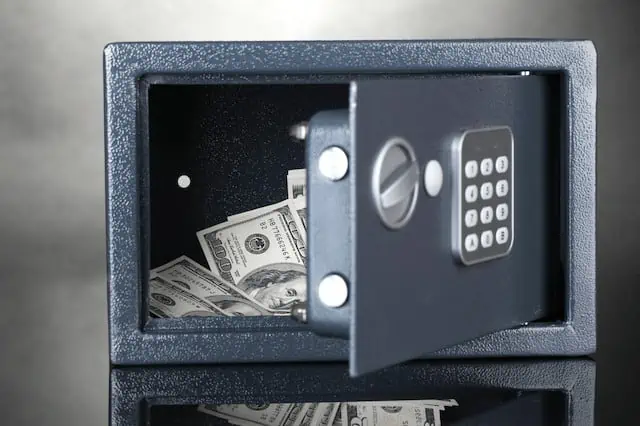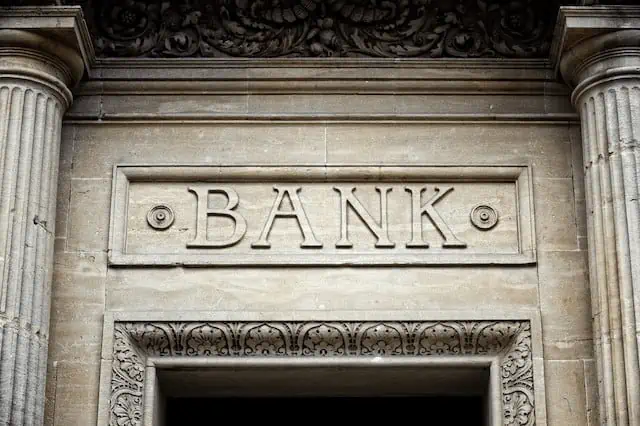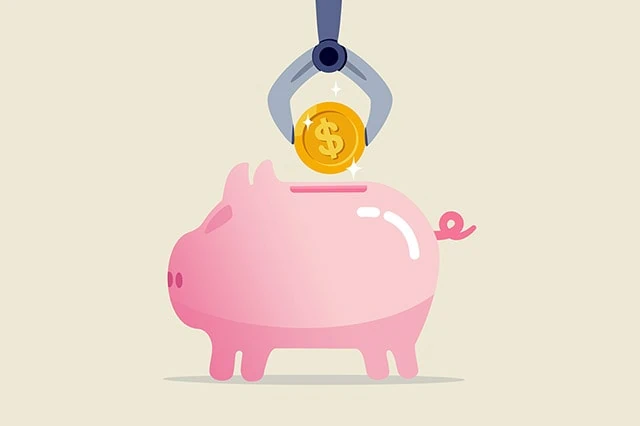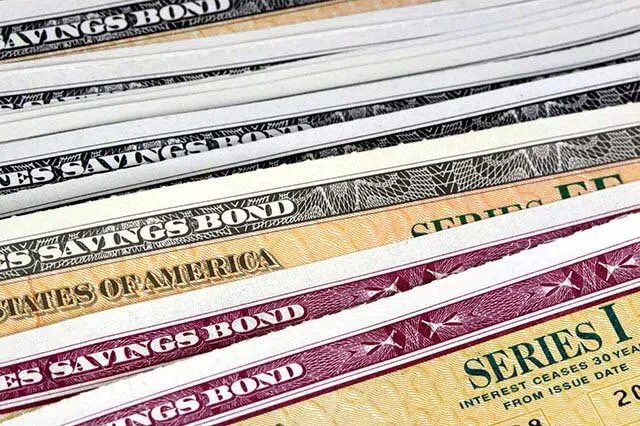If you have a savings account, congratulations—you are a member of one of this country’s most inclusive clubs. More than 70% of Americans have a savings account—and in many cases, it’s the first financial account they’ve ever owned.
A savings account, for many, represents a major step up from the piggy bank. It’s better at keeping your money safe. It allows you to withdraw money without breaking out a hammer. It usually provides interest. And they almost always come with a high level of insurance that ensures you’ll get your funds back even if the bank goes under.
But for all the praises I have to sing about savings accounts, they’re not the end-all be-all solution to your cash-storing needs.
Today, I’m going to talk to you about several substitutes to the basic savings account. While savings accounts are nice, you can sometimes do better—whether that’s, say, earning a higher interest rate on your deposits, or enjoying features that give you more ready access to your money.
You don’t have to ditch your savings account completely to enjoy the benefits of these other options, either. Many people hold their cash in multiple accounts—a savings account, and one or more of the accounts to be discussed.
Table of Contents
What Is a Savings Account?

A traditional savings account is an interest-bearing deposit account that usually allows a limited number of withdrawals and transfers each month. These simple accounts can be established at banks, credit unions, or other financial institutions.
Are Savings Accounts a Good Investment?

A savings account is a secure place to store short- and long-term savings alike. Whether you have a vacation coming up in a few months, or you’re trying to buy a home in a few years, you can stash away money from your paycheck into a savings account so you’re not tempted to spend it.
Depending on whether your savings account is through a bank or a credit union, each depositor is typically given up to $250,000 in Federal Deposit Insurance Corporation (FDIC) insurance or National Credit Union Administration (NCUA) insurance.
However, the interest rates for traditional savings accounts are much lower than many other types of accounts. And what interest rates they do pay are variable, often changing when benchmark interest rates do. Often, savings account interest rates don’t even keep up with inflation.
So if your goal is not just to keep your money safe, but actually allow it to grow (or at least keep pace with inflation), a savings account might not be the best choice.
What Are the Best Options to Consider Other Than a Savings Accounts?

Now, we’ll take a look at the best options to consider for storing your money (and earning some yield) that aren’t a traditional savings account. Please be aware that some of these carry FDIC or NCUA insurance coverage while others don’t. Typically, in exchange for taking on more risk, your expected return from your investments increases. That said, this isn’t a guarantee that your investments or savings will perform as expected and risk is something you should take into consideration before proceeding with any of these options.
Related: 7 Best High-Dividend ETFs for Income-Minded Investors
1. Money Market Accounts

Money market accounts are a category of savings accounts that offer higher interest rates than traditional savings accounts, but lower rates than high-yield savings accounts. Like with savings accounts, the interest rates are variable, not fixed. They’re also considered low-risk investments, they also enjoy FDIC or NCUA insurance, and they’re considered a popular place to keep an emergency fund.
The main pro of the money market account is that it offers a higher interest rate than your average savings account. Past that, however, they have a few drawbacks.
For one, while they are liquid, they tend to be less liquid than savings accounts. Users can conduct a limited number of transactions per month, which usually includes check-writing privileges and/or a debit card. The Federal Reserve used to cap withdrawals at six per month. That requirement—once mandated by Regulation D—is now gone, and many banks allow more transactions, but some banks and credit unions have kept the six-withdrawal limit.
Some money market accounts also charge monthly maintenance fees, and some also have minimum balance requirements. Lastly, while money market accounts typically earn higher interest rates than savings accounts, many other cash alternatives earn better rates.
Pros
— Offers interest
— Allows some monthly transactions (often six)
— Some accounts come with a debit card
Cons
— Some accounts (not all) have high minimum balance requirements
— Interest rates are variable
— Some accounts (not all) have monthly maintenance fees
Related: The 7 Best Dividend ETFs [Get Income + Diversify]
Savings accounts vs. money market accounts

Like with savings accounts, you can open money market accounts at banks and credit unions. Also like with savings accounts, money market accounts have variable rates.
But money market account yields are typically higher than your traditional savings account. So if you can meet any minimum balance requirements a money market account requires and choose one without monthly fees, this type of account can usually earn you more money.
Who should consider a money market account?
You should consider these accounts if you are looking for a flexible, interest-bearing account to store an emergency fund or other savings you want to keep liquid.
Related: The Best Money Market Account Alternatives
2. Certificates of Deposit (CDs)

A certificate of deposit (CD) is a type of savings account with a fixed interest rate that earns interest on a lump sum for a predetermined amount of time. Most terms are in the range of three months to five years—and usually, the longer the term of the CD, the higher yield it will pay.
You can’t withdraw your money from a CD unless you’re willing to pay an early withdrawal penalty. So, this is a relatively illiquid investment, but the tradeoff is you can earn much higher interest rates compared to conventional bank savings accounts.
A CD can be a good place to store money for a specific future expense that’s well down the road, such as a house down payment or a new car.
Pros
— Fixed interest rates
— Higher interest rates than a traditional savings account
Cons
— Illiquidity
— Rates still not as competitive as other options
Related: The 7 Best Vanguard ETFs for 2024 [Build a Low-Cost Portfolio]
Savings accounts vs. certificates of deposit (CDs)

Savings accounts let you access your money easier than CDs, where you’re locked in for a predetermined amount of time. However, a CD typically has a much higher interest rate than a savings account. For money you may need to access, a savings account is better. Any money you are confident you won’t need before a CD reaches maturity is preferable to keep in a CD or CD ladder—where you spread your money across several CDs of different lengths.
Who should consider CDs?
Anyone looking for a safe, interest-bearing financial vehicle to hold their money should consider a certificate of deposit. Some people choose to create a CD ladder to take advantage of the higher interest rates, while reducing the illiquidity problem.
A CD ladder means they have several CDs that mature at varying dates, so they are never too far away from having a CD mature. As this keeps a portion of your money close to being accessible at any time, some people use CD ladders as an emergency fund.
Related: 11 Best CD Alternatives to Capture Interest With Low Risk
3. High-Yield Savings Accounts

High-yield savings accounts (HYSAs) differentiate from traditional bank savings accounts by, as you might have guessed, offering significantly higher interest rates. Like with traditional savings accounts, HYSAs offer variable rates—but even when they’re “lower,” they’ll still be significantly higher than the rates of a standard savings account.
Similar to money market accounts and some traditional savings accounts, HYSA holders usually can only make a limited number of transactions per month. A high-yield savings account typically has lower fees than money market accounts, but it usually doesn’t include a checkbook.
Pros
— Higher interest rates
— Easy to open with online banks
Cons
— Interest rates are variable
— Sometimes have high minimum deposits
Related: The 7 Best Fidelity Index Funds for Beginners
Savings accounts vs. high-yield savings accounts

Traditional savings accounts and high-yield savings accounts are both fairly liquid and allow you to earn at least some interest on your deposits. In theory, you could open several different savings accounts for different upcoming expenses (e.g., one designated savings account for an upcoming vacation, another for Christmas presents, another for a down payment on a home).
A high-yield savings account might have more withdrawal restrictions than a traditional savings account, but an HYSA will also earn you a much higher yield.
Who should consider high-yield savings accounts?
A high-yield savings account is another popular place to store money in case of an emergency. These are useful accounts for short- and long-term savings goals.
Related: The 7 Best Vanguard Index Funds for Beginners
4. Money Market Funds

Not to be confused with a money market account, a money market mutual fund (or money market fund) is a type of open-ended mutual fund that invests in liquid, short-term debt securities, cash, and cash equivalents. The funds are designed to earn interest with minimum risk. They’re meant to maintain a net asset value of $1 per share, and while not guaranteed, they virtually always do. (For instance, during the Great Recession, just one money market fund “broke the buck.”)
There are government money market funds, municipal money market funds, and prime money market funds. These funds are a good low-risk, low-return investment.
Pros
— Can provide a steady income
— Highly liquid
Cons
— Not insured by the FDIC
— Often requires modest annual fees
— May not keep up with inflation or even lose money
Related: 12 Best Long-Term Stocks to Buy and Hold Forever
Savings accounts vs. money market funds

While money market funds aren’t very risky, they aren’t as safe as a traditional savings account. But they do have more earning potential. However, money market funds—and any cash alternative you’d own inside of an investment account—is going to be less liquid compared to a savings account. That’s just because of the additional steps and waiting time involved. You have to sell the asset, wait for the transaction to settle, either wait for a check from the broker or have the money transferred to a related bank account, then withdraw the money. (And depending on the type of investment account, you might also have to worry about tax implications, withdrawal penalties, and other limitations.)
Who should consider money market funds?
These accounts are low-risk investments, making them a good alternative for investors who want to earn more on cash sitting idle in a brokerage account.
Many brokerage accounts will actually sweep idle cash into their money market funds so you’re still earning interest even if you don’t have all of your funds invested.
Related: 5 Best Vanguard Retirement Funds [Start Saving in 2024]
5. Savings Bonds

U.S. savings bonds are effectively little loans to the U.S. government—and they come with a promise that, in time, you’ll be paid back your initial investment, plus interest. But unlike most other bonds, you don’t collect that interest until you cash in the bond. You can’t hold savings bonds in a brokerage account. And you can’t sell savings bonds to other investors; only a bond’s owner or beneficiary can cash it.
If you want to buy a savings bond, under 99.99% of cases, you’ll need to go to the U.S. government’s TreasuryDirect website. Both you and the recipient will need a TreasuryDirect account; a child’s parent or adult custodian can set one up for them. You can then gift the child (or anyone) an electronic savings bond if you know the person’s full name, Social Security number or Taxpayer Identification Number, and TreasuryDirect account number. Just note that you have to hold a bond in your account for five business days before you can gift it to someone.
And yes, electronic savings bonds are now the gold standard. With one exception, which we’ll get to here in a moment, you can no longer buy paper savings bonds.
You have two options when buying a savings bond for a baby, kids, or even adults: Series EE savings bonds, and Series I savings bonds.
Like Young and the Invested’s Content? Be sure to follow us.
Series EE savings bonds

Series EE Bonds earn fixed interest rates for 30 years, and they offer a return of double the value initially purchased if held for at least 20 years.
In other words, if you hold a Series EE savings bond for at least the next 20 years, the bond will either earn enough in interest to double its initial value, or the federal government will make a one-time adjustment to the price (adding money) to honor its guarantee.
But remember: The Series EE savings bond will accumulate interest for up to 30 years. If your child doesn’t immediately need the money after 20 years, they could benefit from waiting even longer.
You must spend at least $25 when buying Series EE bonds. Above that, you can spend any amount down to the penny. (Example: You could buy $152.57 worth of EE bonds.)
Series I savings bonds

Series I savings bonds have both a fixed interest rate, as well as an inflation-adjusted interest rate that’s calculated twice each year. The reason? Series I savings bonds are designed to protect your savings from inflation (rising prices).
Like with EE bonds, Series I savings bonds require a minimum $25 purchase, but you can select any amount over that down to the penny. But while Series I bonds also accumulate interest over 30 years, there is no 20-year value guarantee like with EE bonds.
Series I also includes the lone exception to the paper-bonds rule. Specifically, you can use your IRS tax refund to buy Series I paper savings bonds, and you can do so in five denominations: $50, $100, $200, $500, and $1,000. While paper bonds are a rarity, financial institutions still allow you to redeem them.
Pros
— Safe investment
— Grows your money over time
Cons
— No interest paid until maturity
— Extremely illiquid
Related: 5 Best Fidelity Retirement Funds [Low-Cost + Long-Term]
Savings accounts vs. savings bonds

Savings accounts can help you earn a little money on deposits while having easy access to your cash. Savings bonds are extremely illiquid and should only be used to help people build wealth over long periods of time.
Who should consider savings bonds?
Savings bonds are great ways to help young people save, so I always think of them as an ideal financial gift for babies, kids, and grandchildren.
6. Treasury Bills

In addition to savings bonds, the U.S. Treasury can also borrow money through Treasuries, which typically are broken down into three types, determined by their time to maturity:
— Treasury bonds (T-bonds): Mature in 20 to 30 years
— Treasury notes (T-notes): Mature in two to 10 years
— Treasury bills (T-bills): Mature in 4 to 52 weeks
Treasury bills—which can have maturities of four, eight, 13, 17, 26, and 52 weeks—are sold in increments of $100 (also the minimum purchase amount) up to a value of $10 million. You can typically purchase these through the U.S. government’s Treasury Direct or through a bank or broker.
When you buy a T-bill, you lend money to the U.S. government for a specified period of time. The price for a T-bill will vary, but usually will be below the bond’s face value, or “par value.” (For instance, a $1,000 T-bill might cost $975 to purchase.) When the T-bill matures, you receive the full par value of the bond—so the return on your investment is the difference between the discounted price you paid at auction and the par value of the T-bill.
Like savings bonds, Treasury bills do not pay interest until maturity. Unlike savings bonds, you can hold Treasuries in a brokerage account—and you can sell them there, too, making them far more liquid than savings bonds.
Treasuries are among the most secure investments in the world due to their virtually guaranteed repayment. The federal government hasn’t defaulted on a debt payment since moving away from the gold standard in 1971.
When you receive the repayment of your T-bills’ face value, the income generated is exempt from state and local taxes. This can make them a good choice for investors looking for reliable, tax-advantaged income.
Pros
— Very secure investment
— Has tax advantages
Cons
— Lower rate of return than alternatives
— No interest paid until maturity
Related: 5 Best Schwab Retirement Funds [High Quality, Low Costs]
Savings accounts vs. Treasuries

While Treasuries are considered liquid investments, they still don’t provide the instant access to funds that a savings account provides. However, a Treasury bill provides a higher return than a savings account.
Who should consider Treasury bills?
Treasury bills are a good fit for people who seek an extremely secure investment that provides a higher interest rate than a savings account.
Related: 9 Monthly Dividend Stocks for Frequent, Regular Income
7. Cash Management Accounts

A cash management account is a nonbank cash account. This means that instead of opening this account through a traditional bank or credit union, it’s typically offered by online “banks,” robo-advisors, and mobile trading apps.
These accounts typically have high interest rates but also let you access your money at any time. Specific features vary by account. Fidelity’s Cash Management Account is currently one of the best options. It offers a high annual percentage yield, has no account fees or minimums, and reimburses ATM fees globally.
Pros
— Combines features of checking and savings accounts
— Possibly higher interest rates than traditional banks
Cons
— Possibly no physical locations to visit
— Other products might have better interest rates
Related: Best Target Date Funds: Vanguard vs. Schwab vs. Fidelity
Savings accounts vs. cash management accounts

Those who like the comfort of traditional banks or credit unions might want to stick with a savings account. Anyone looking for a more competitive yield and desire to consolidate accounts might enjoy a cash management account.
Who should consider cash management accounts?
People seeking an alternative to traditional bank accounts should consider a cash management account. These are an excellent choice if you’re tech-savvy and don’t necessarily have a need for physical bank locations.
Related: Best Vanguard Retirement Funds for a 401(k) Plan
8. Investment Accounts

Investment accounts hold assets such as stocks, bonds, mutual funds, ETFs, and more. While “investment accounts” and “brokerage accounts” are often used interchangeably, there are other kinds of investment accounts—including IRAs, Roth IRAs, and 401(k)s—that share some similarities but have some differences, including tax treatment.
With an investment account, you can buy various assets, which can then grow your money by appreciating in value, paying dividends, or both.
Compared to the other savings account alternatives in this piece, the investments in these accounts have the highest possible risk, but also the highest possible financial rewards.
Pros
— No guarantee of returns
— Some accounts and investments charge fees
Cons
— Substantial possible returns
— Some investments can provide a high steady income
Savings accounts vs. investment accounts

A savings account has guaranteed gains, while an investment account doesn’t. However, gains from a savings account might not even keep up with inflation, whereas many common investments can not only beat inflation, but grow substantially. A savings account is a better fit for short-term savings and an investment account is better for long-term financial needs.
Who should consider investment accounts?
People who seek high returns from long-term investments should consider opening an investment account. However, depending on the type of investments you plan to hold, you might need a healthy risk tolerance.
Related: Best Vanguard Retirement Funds for an IRA
Related: 12 Best Long-Term Stocks to Buy and Hold Forever
As even novice investors probably know, funds—whether they’re mutual funds or exchange-traded funds (ETFs)—are the simplest and easiest ways to invest in the stock market. But the best long-term stocks also offer many investors a way to stay “invested” intellectually—by following companies they believe in. They also provide investors with the potential for outperformance.
So if your’e looking for a starting point for your own portfolio, look no further. Check out our list of the best long-term stocks for buy-and-hold investors.
Related: Best Target-Date Funds: Vanguard vs. Schwab vs. Fidelity

Looking to simplify your retirement investing? Target-date funds are a great way to pick one fund that aligns with when you plan to retire and then contribute to it for life. These are some of the best funds to own for retirement if you don’t want to make any investment decisions on a regular basis.
We provide an overview of how these funds work, who they’re best for, and then compare the offerings of three leading fund providers: Vanguard, Schwab, and Fidelity.
Related: 9 Best Monthly Dividend Stocks for Frequent, Regular Income

The vast majority of American dividend stocks pay regular, reliable payouts—and they do so at a more frequent clip (quarterly) than dividend stocks in most other countries (typically every six months or year).
Still, if you’ve ever thought to yourself, “it’d sure be nice to collect these dividends more often,” you don’t have to look far. While they’re not terribly common, American exchanges boast dozens of monthly dividend stocks.
Please Don’t Forget to Like, Follow and Comment

Did you find this article helpful? We’d love to hear your thoughts! Leave a comment with the box on the left-hand side of the screen and share your thoughts.
Also, do you want to stay up-to-date on our latest content?
1. Follow us by clicking the [+ Follow] button above,
2. Subscribe to The Weekend Tea, our weekly newsletter to read more about investing, spending, taxes, and more, and
3. Give the article a Thumbs Up on the top-left side of the screen.
4. And lastly, if you think this information would benefit your friends and family, don’t hesitate to share it with them!





